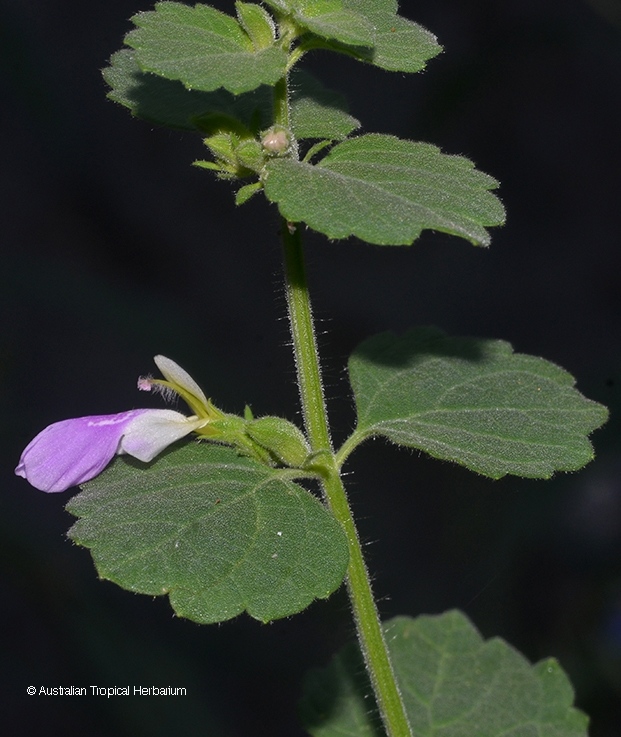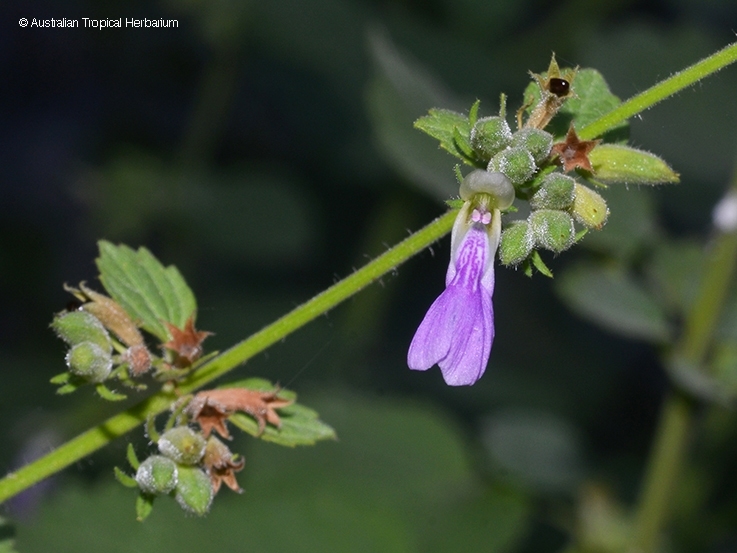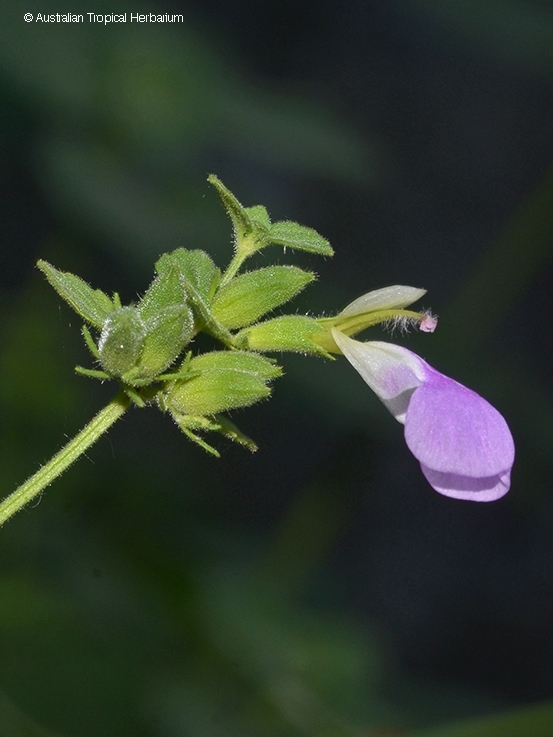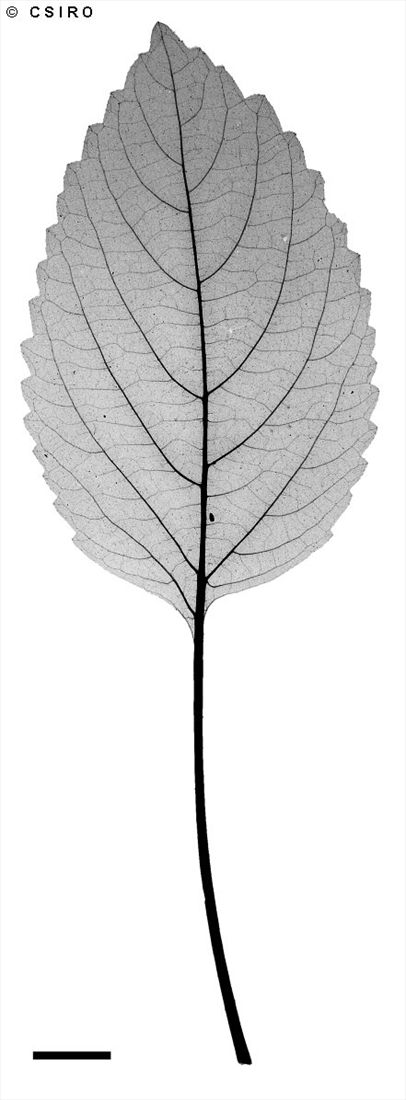Australian Tropical Rainforest Plants - Online edition
Anisomeles macdonaldii A.R.Bean






Bean, A.R. (2015) Austrobaileya 9(3): 363-364. Type: "Australia: Queensland. COOK DISTRICT: c. 8 km by road E of Chillagoe, 21 April 2013, K.R. McDonald KRM14083 & G.P. Guymer."
Leaf bearing stems 4-angled. Leaves on stems ovate to elliptic, 51-91 mm long x 32-63 mm wide; margins crenate or dentate; base obtuse or broadly cuneate; petioles 19-40 mm long; leaf blade upper and lower surfaces with erect glandular and curved eglandular hairs, dense to moderately dense, sessile glands present.
Floral bracts leaf-like but gradually becoming smaller, ovate , 14-47 mm long x 11-28 mm wide, consistently longer than the inflorescence clusters (verticils). Inflorescence clusters spaced along rachis, sometimes branched near base, with 4-11 flowers per axis (monochasium). Corolla 2-lipped. Corolla tube longer than or equal to calyx. Corolla platform (flattened upper side of the large lower corolla lip) with eglandular hairs.
Seed germination time 433. Cotyledons orbicular, about 4-7 mm diam., undersurface hairy. First pair of true leaves elliptic to ovate, margins toothed. At the tenth leaf stage: leaf blade about 50 x 35 mm with about 11 large teeth on each side, elliptic to ovate, petiole about 20-25 mm long, channelled on the upper surface. Stem, petiole and both the upper and lower surfaces of the leaf blade with numerous long erect multicellular hairs and dense short glandular hairs. Lower surface of the leaf blade with numerous pale-coloured globular glands. All seedling parts emitting a strong odour when crushed. Stems square in transverse section.
Occurs in NEQ and CEQ. Altitudinal range from 300 to 800 m in NEQ. Usually grows in open forest but occasionally found in monsoon forest and vine thickets.
Description adapted from A.R.Bean (2015).





